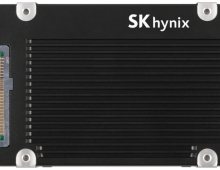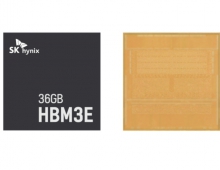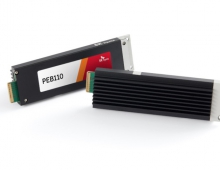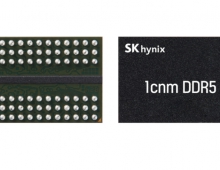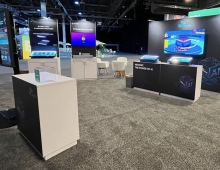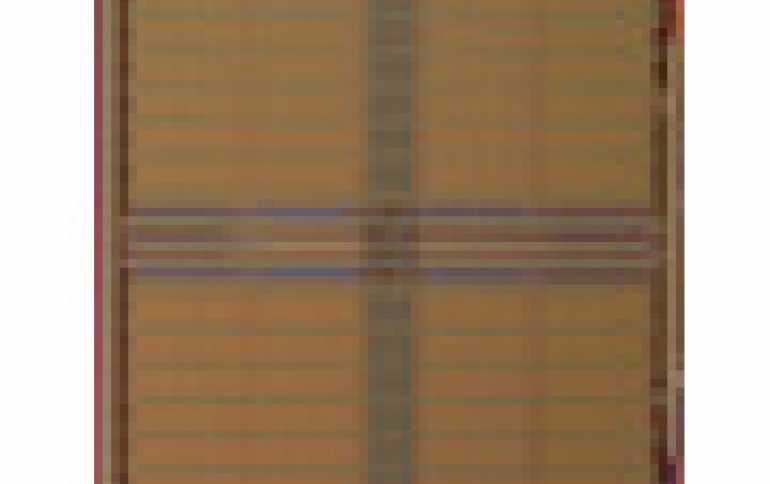
Elpida Memory Develops New 64Mbit Resistance RAM Prototype
Elpida Memory, Inc. today announced the development of
its first high-speed non-volatile resistance memory
(ReRAM) prototype.
As the ReRAM prototype was made using a 50-nanometer
(nm) process technology it has a memory cell array
operation of 64 megabits, one of the highest densities
possible for ReRAM. The prototype was jointly
developed with the New Energy and Industrial
Technology Development Organization (NEDO), a
Japanese-funded public institution. Further work on
ReRAM development is being conducted with Sharp
Corporation, the National Institute of Advanced
Industrial Science and Technology (AIST, another
Japanese public institution) and the University of
Tokyo.
ReRAM (Resistance Random Access Memory) is a next-generation semiconductor memory technology that uses material which changes resistance in response to changes in the electric voltage. This new type of non-volatile memory can store data even when the power supply is turned off. Its most attractive feature is that it can read/write data at high speeds using little voltage. While dynamic random-access memory (DRAM) is superior to existing non-volatile memory with respect to read/write speeds and endurance, DRAM quickly loses data when the power supply is removed. NAND flash memory, a leading example of nonvolatile memory, retains data even when the power is removed but has performance measures that are inferior to DRAM.
ReRAM, on the other hand, is a type of semiconductor memory that contains the advantages of both DRAM and NAND flash memory. It has a write speed of 10 nanoseconds (ns), about the same as DRAM, and write endurance of more than a million times, or more than 10 times greater than NAND flash.
Elpida plans to continue development toward a 2013 goal of volume production of ReRAM in the gigabit capacity class using a 30nm process technology. If the high-speed new memory can be provided at low cost, it will contribute enormously to a reduction of memory power consumption. This will make it an attractive storage (recording medium) option in a variety of information technology products, such as smartphones, tablet devices and ultra-thin light notebook PCs.
Elpida continues to develop process migration and other technology related to DRAM and at the same time promotes the development of ReRAM as a promising next-generation memory that can substitute for DRAM functions.
Merge with Nanya?
Elpida Memory is also reportedly in talks to merge with U.S. firm Micron Technology and Taiwan's Nanya Technology, the Yomiuri newspaper reported on Tuesday, as the memory chip makers battle a weak market and well-funded South Korean rivals.
Elpida said in a statement it would not comment on rumors and speculation.
The Yomiuri said Elpida, Micron and Nanya planned to begin due diligence soon and Elpida may seek an investment of as much as 100 billion yen from the Innovation Network Corp of Japan.
Elpida President Yukio Sakamoto also made a trip to the United States last week, sources familiar with the situation told Reuters, although sources at financial institutions doing business with Elpida said at the time there was no word of progress on a possible Micron deal.
Micron also makes NAND flash memory and reported a net loss in its latest quarter. The company has a 10-year agreement with Nanya until 2018 to codevelop new DRAM chip technology.
Toshiba said earlier this month it had held talks about possible support for Elpida but was unlikely to come to its rescue after pulling out of the DRAM business.
ReRAM (Resistance Random Access Memory) is a next-generation semiconductor memory technology that uses material which changes resistance in response to changes in the electric voltage. This new type of non-volatile memory can store data even when the power supply is turned off. Its most attractive feature is that it can read/write data at high speeds using little voltage. While dynamic random-access memory (DRAM) is superior to existing non-volatile memory with respect to read/write speeds and endurance, DRAM quickly loses data when the power supply is removed. NAND flash memory, a leading example of nonvolatile memory, retains data even when the power is removed but has performance measures that are inferior to DRAM.
ReRAM, on the other hand, is a type of semiconductor memory that contains the advantages of both DRAM and NAND flash memory. It has a write speed of 10 nanoseconds (ns), about the same as DRAM, and write endurance of more than a million times, or more than 10 times greater than NAND flash.
Elpida plans to continue development toward a 2013 goal of volume production of ReRAM in the gigabit capacity class using a 30nm process technology. If the high-speed new memory can be provided at low cost, it will contribute enormously to a reduction of memory power consumption. This will make it an attractive storage (recording medium) option in a variety of information technology products, such as smartphones, tablet devices and ultra-thin light notebook PCs.
Elpida continues to develop process migration and other technology related to DRAM and at the same time promotes the development of ReRAM as a promising next-generation memory that can substitute for DRAM functions.
Merge with Nanya?
Elpida Memory is also reportedly in talks to merge with U.S. firm Micron Technology and Taiwan's Nanya Technology, the Yomiuri newspaper reported on Tuesday, as the memory chip makers battle a weak market and well-funded South Korean rivals.
Elpida said in a statement it would not comment on rumors and speculation.
The Yomiuri said Elpida, Micron and Nanya planned to begin due diligence soon and Elpida may seek an investment of as much as 100 billion yen from the Innovation Network Corp of Japan.
Elpida President Yukio Sakamoto also made a trip to the United States last week, sources familiar with the situation told Reuters, although sources at financial institutions doing business with Elpida said at the time there was no word of progress on a possible Micron deal.
Micron also makes NAND flash memory and reported a net loss in its latest quarter. The company has a 10-year agreement with Nanya until 2018 to codevelop new DRAM chip technology.
Toshiba said earlier this month it had held talks about possible support for Elpida but was unlikely to come to its rescue after pulling out of the DRAM business.

